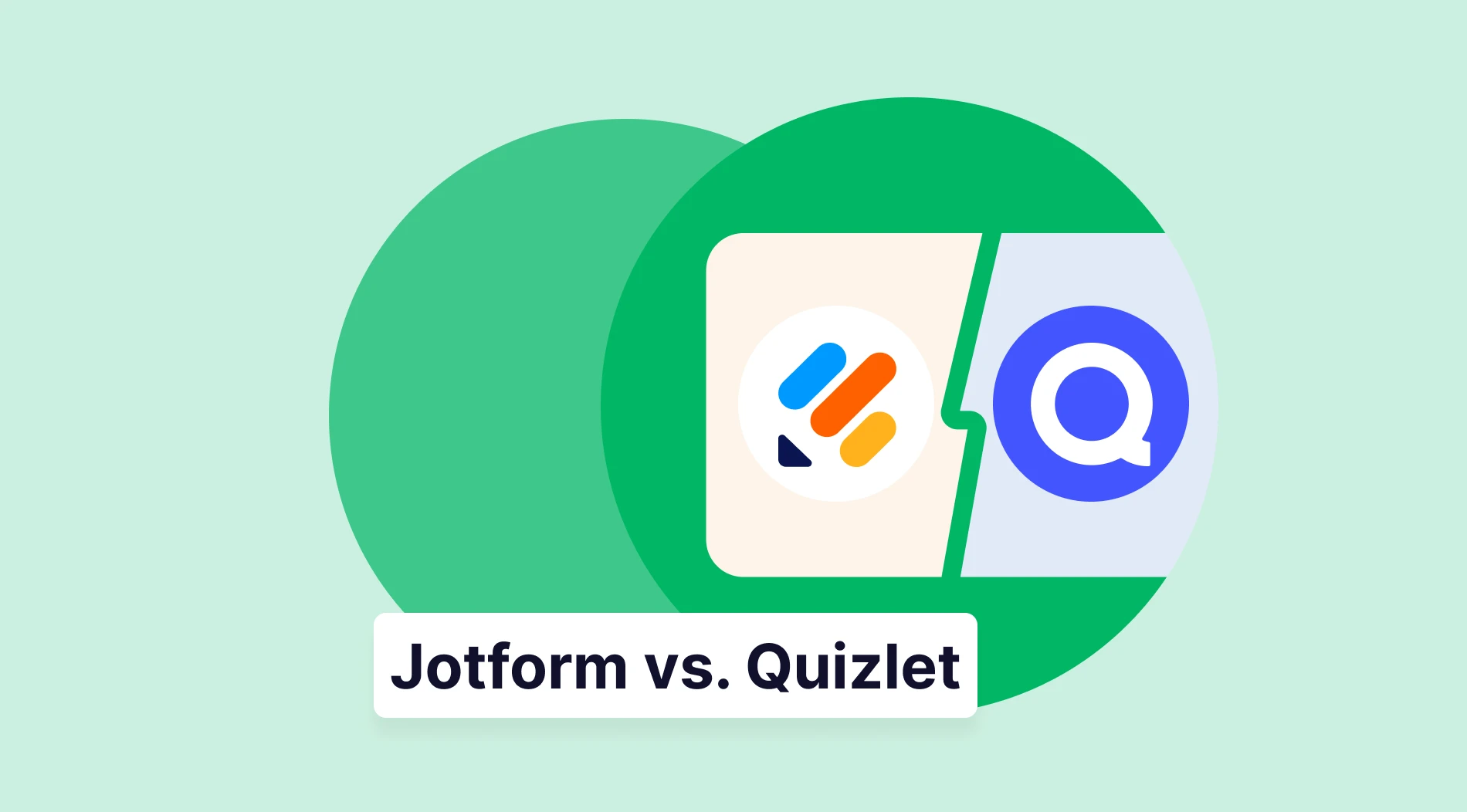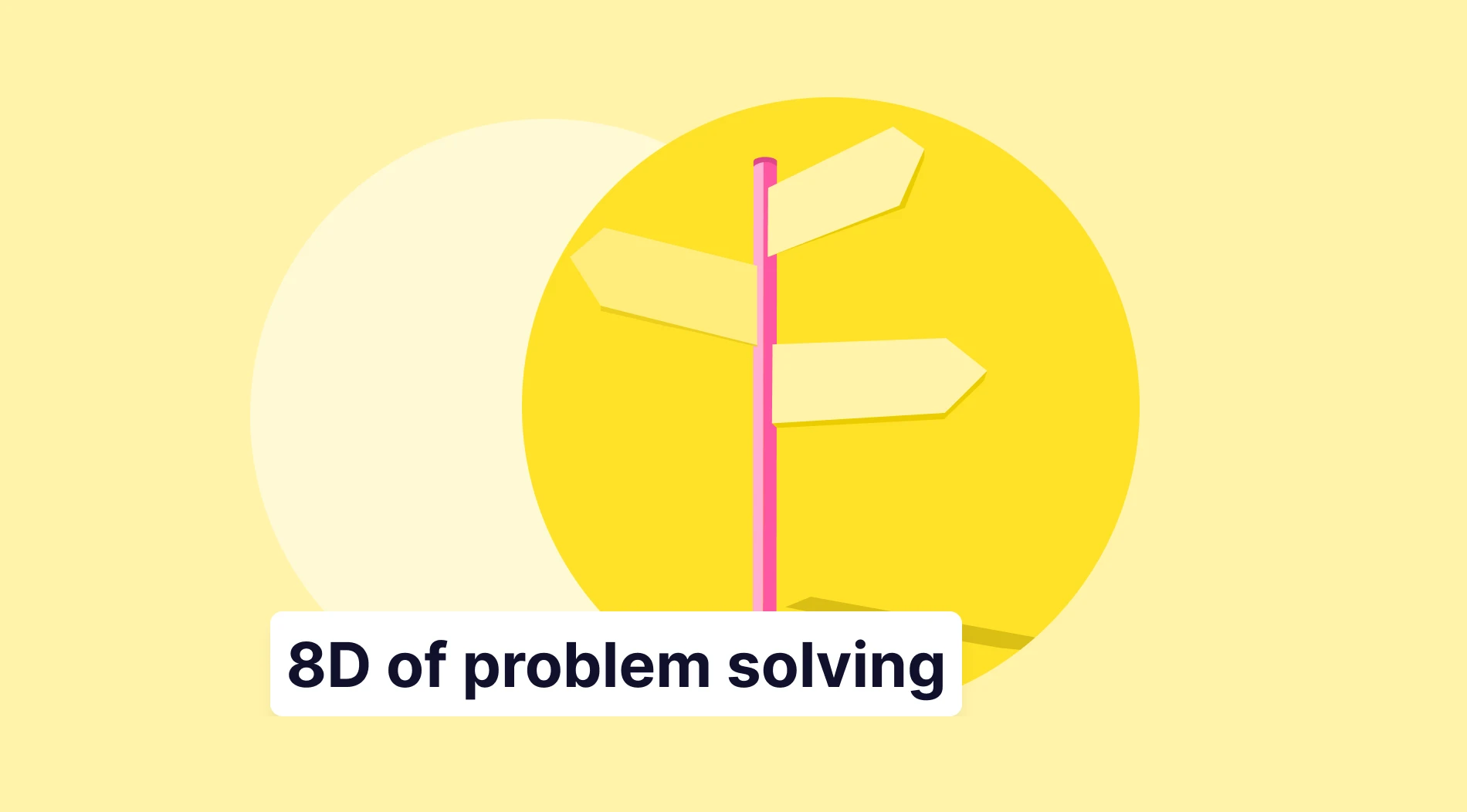How did Newton figure out the gravity after seeing an apple fall from a tree? What kind of research did Nicolaus Copernicus conduct to figure out that the planets revolve around the sun and not vice versa? It is certain that they did not conduct practical experiments to figure this stuff out.
The type of research these two scientists do is called conceptual research. They basically observed their surroundings to conceptualize and develop theories about gravitation, motion, and astronomy. That is what some scientists and philosophers do to wrap their heads around existing concepts and new ideas. Now, let us see what exactly conceptual research is and other details.
What is conceptual research?
Conceptual research is a type of research that does not involve conducting any practical experiments. It is based on observing and analyzing already existing concepts and theories. The researcher can observe their surroundings and develop brand-new theories, or they can build on existing ones.
Conceptual research is widely used in the study of philosophy to develop new ideas. And this type of research is also used to answer business questions and organize ideas, or interpret existing theories differently.
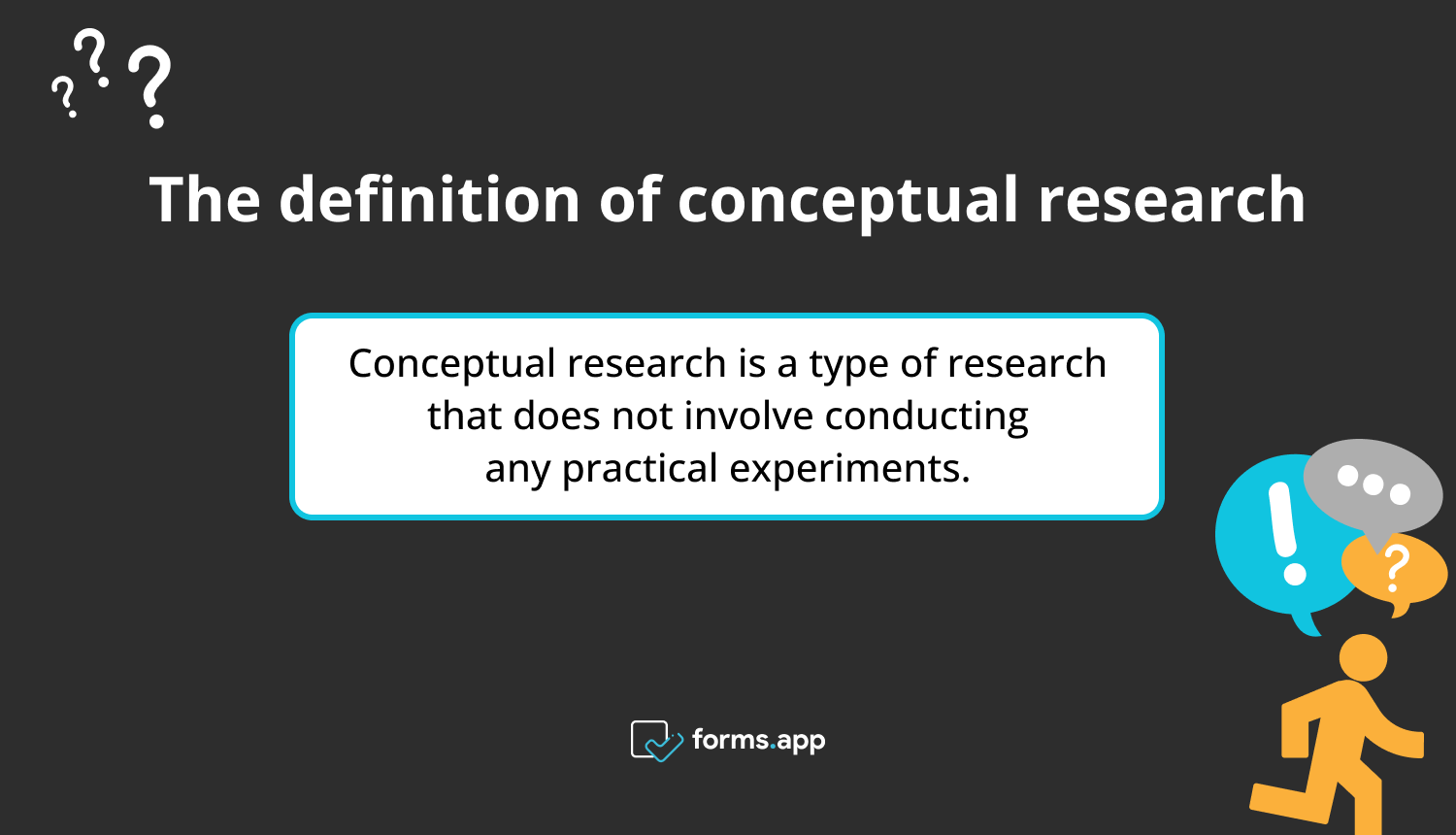
Conceptual research definition
Conceptual research frameworks
Even if the researcher is not conducting any experiments of their own, they should still work in a systematic manner, to be precise. And a conceptual research framework is built around existing literature and appropriate research studies that can explain the phenomenon. Here is a step-by-step guide to creating a conceptual research framework:
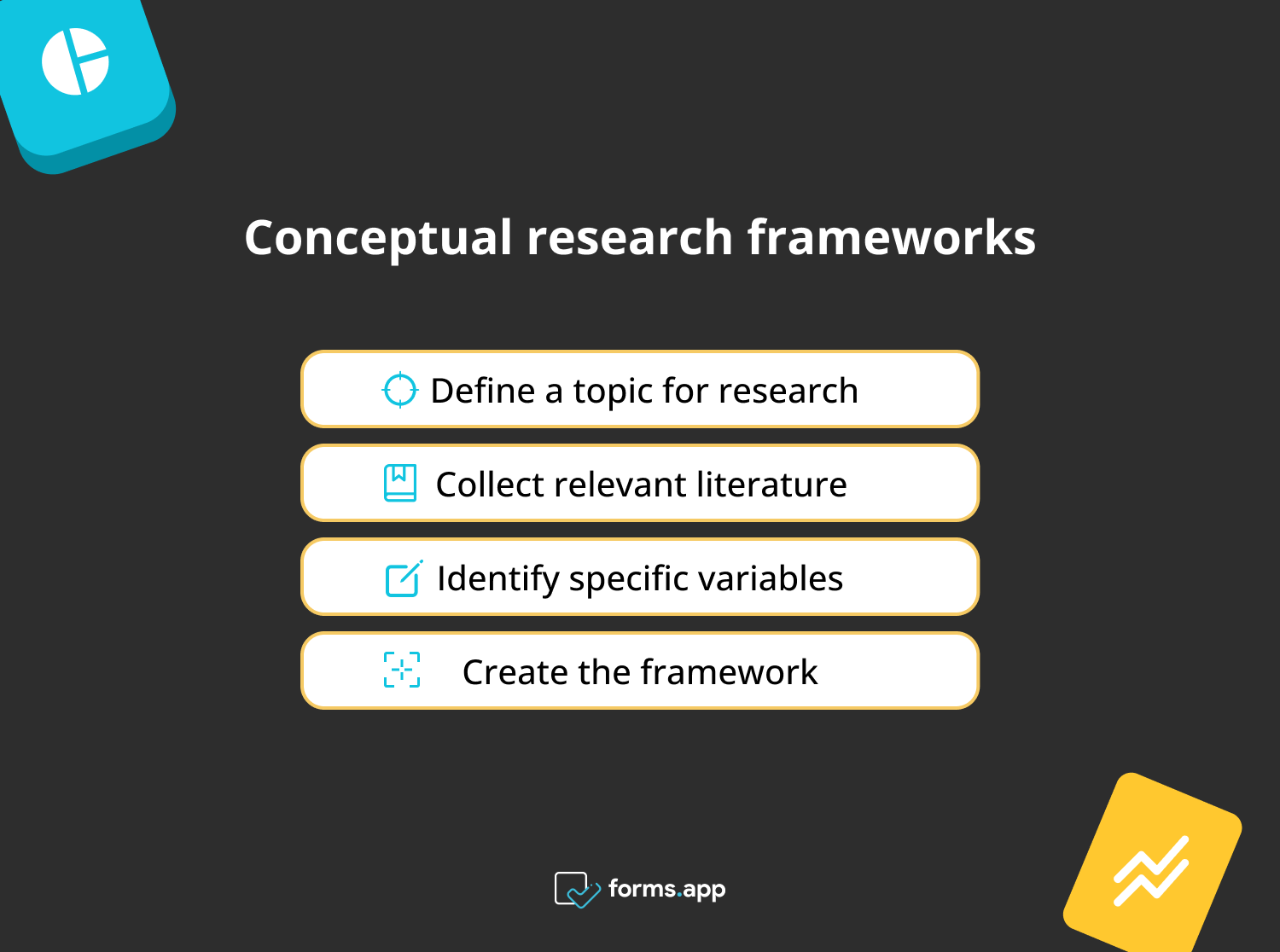
The steps for a conceptual research framework
1 - Define a topic for research:
The first step in creating your research framework is to choose the topic you will be working on. Most researchers define a topic in their area of expertise and go along with it.
2 - Collect relevant literature:
After deciding on the subject, the next and most important step is collecting relevant literature. As this type of research heavily relies on existing literature, it is important to find reliable sources. Successfully collecting relevant information is key to successfully completing this step. The reliable sources one can use are:
- scientific journals
- research papers (published by well-known scientists)
- Public libraries
- Online databases
- Relevant books
3 - Identify specific variables:
In this step, identify specific variables that may affect your research. These variables may give your study a new scope and a new area to cover during your research. For example, let us say you want to conduct research about the occurrence of depression in teenage boys aged 14 to 19. Here, the two variables are teenage boys and depression.
During your research, you figure that substance abuse among teenage boys has a big effect on their mental wellbeings. Therefore, you add substance abuse as a relevant variable and be mindful of that when you are continuing your research.
4 - Create the framework:
The final step is creating the framework after going through all the relevant data available. The research question in hand becomes the research framework
Conceptual research examples
When a researcher decides on the subject they want to explore, the next thing they should decide is what kind of methods they want to do. They can choose the experiments and surveys, but sometimes these methods are not possible for different reasons. And when they can not do practical experimenting, they can use existing literature and observation. Here are two examples where conceptual research can be used:
- Example 1 of conceptual research:
A researcher wants to explore the key factors that influence consumer behavior in the online shopping environment. That is their research question. Once the researcher decides on the subject, they can begin by reviewing the existing literature on consumer behavior and examining different theories and models of consumer behavior.
Then, they can identify common themes or factors that have emerged. By understanding this phenomenon, the researcher can develop a conceptual framework.
- Example 2 of conceptual research:
A group of researchers wants to see if there is any correlation between chemically dyeing your hair and the risk of cancer in women. They can start collecting data on women that had cancer and usage of hair dye. They can collect research papers on this particular subject. And they can create a conceptual framework with the information they collected and analyzed.
Advantages and disadvantages of conceptual research
There are multiple research types for researchers to get to the goal they want, and they all offer different advantages. It is up to the researchers to decide on the most suitable one for their study and go along with that. The conceptual study also has its positive and negative aspects one should have in mind. Now, let us go through the list of conceptual research advantages and disadvantages.
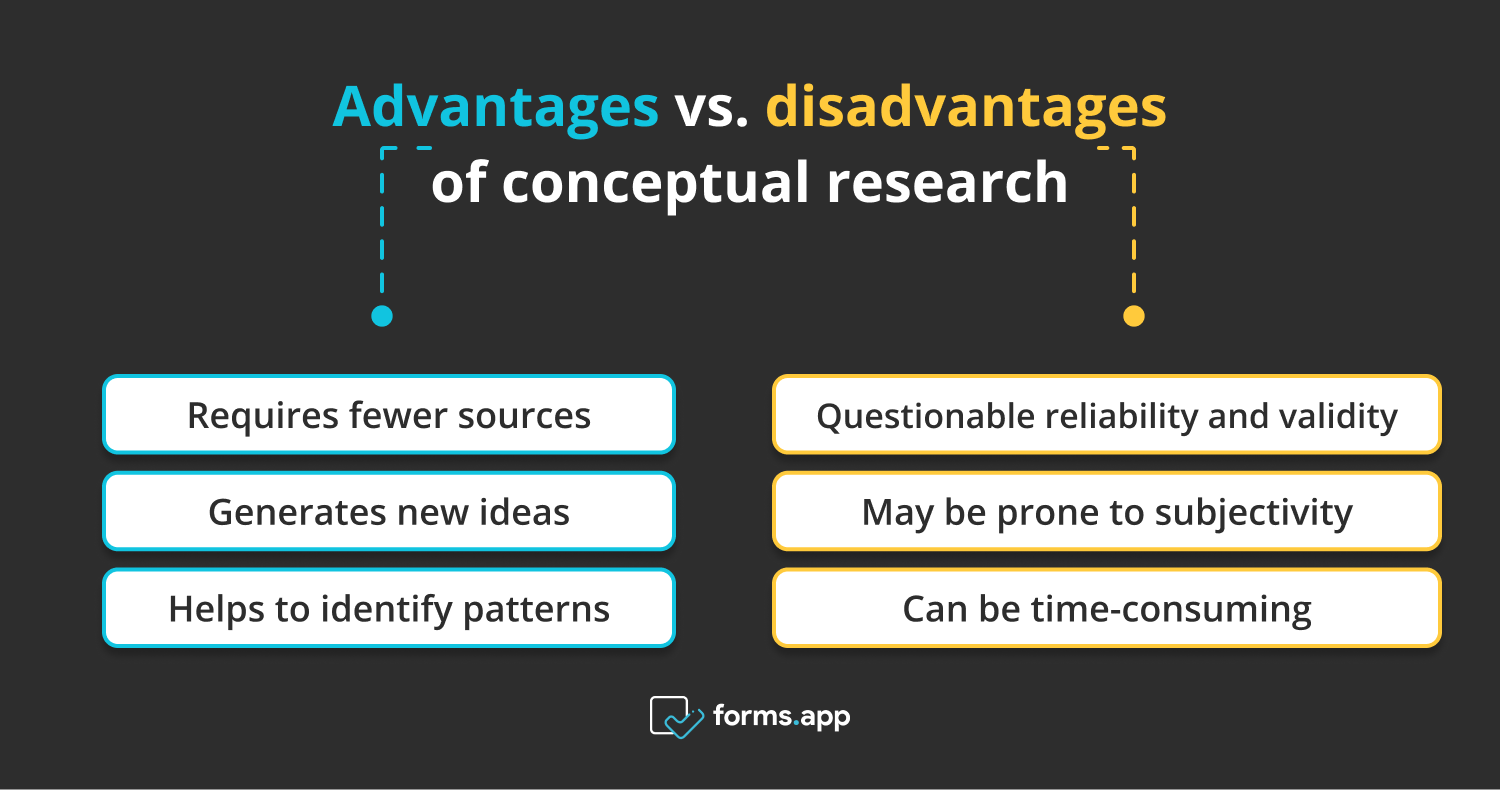
Advantages vs. disadvantages of conceptual research
Advantages of conceptual research:
- Requires fewer sources: This type of research does not involve any type of experiment. Therefore it saves money, energy, and manpower. It only involves theorizing and searching through existing literature.
- Generates new ideas: Conceptual research can help generate new ideas and hypotheses. Researchers can use data collection to add on top of abstract ideas or concepts
- Helps to identify patterns: Conceptual research can help identify patterns in complex concepts and help develop a conceptual analysis. This can lead to a better understanding of how different factors are related to each other.
Disadvantages of conceptual research:
- Questionable reliability and validity: Conclusions drawn from literature reviews on conceptual research topics are less fact-based and may not essentially be considered dependable. Because they are not backed up by practical experimentation, they may have less credibility.
- May be prone to subjectivity: Because it relies on abstract concepts, conceptual research may be influenced by personal biases and perspectives. Researchers should be mindful of this effect and act on it accordingly.
- Can be time-consuming: As conceptual research involves extensive research and analyses of relevant literature, it may take a longer time to finalize the study on hand. This can be challenging for researchers who are working within time constraints.
Conceptual research vs. empirical research
Conceptual research is about creating an idea after looking at existing data or adding on a theory after going through available literature. And the empirical research includes something different than the prior one. Empirical research involves research based on observation, experiments, and verifiable evidence.
The main difference between the two is the fact that empirical research involves doing experiments to develop a conceptual framework. Empirical research studies are observable and measurable as they are verifiable by observations or experience. In order to see if a study is empirical, you can ask yourself this question: Can I create this study and test these results myself?
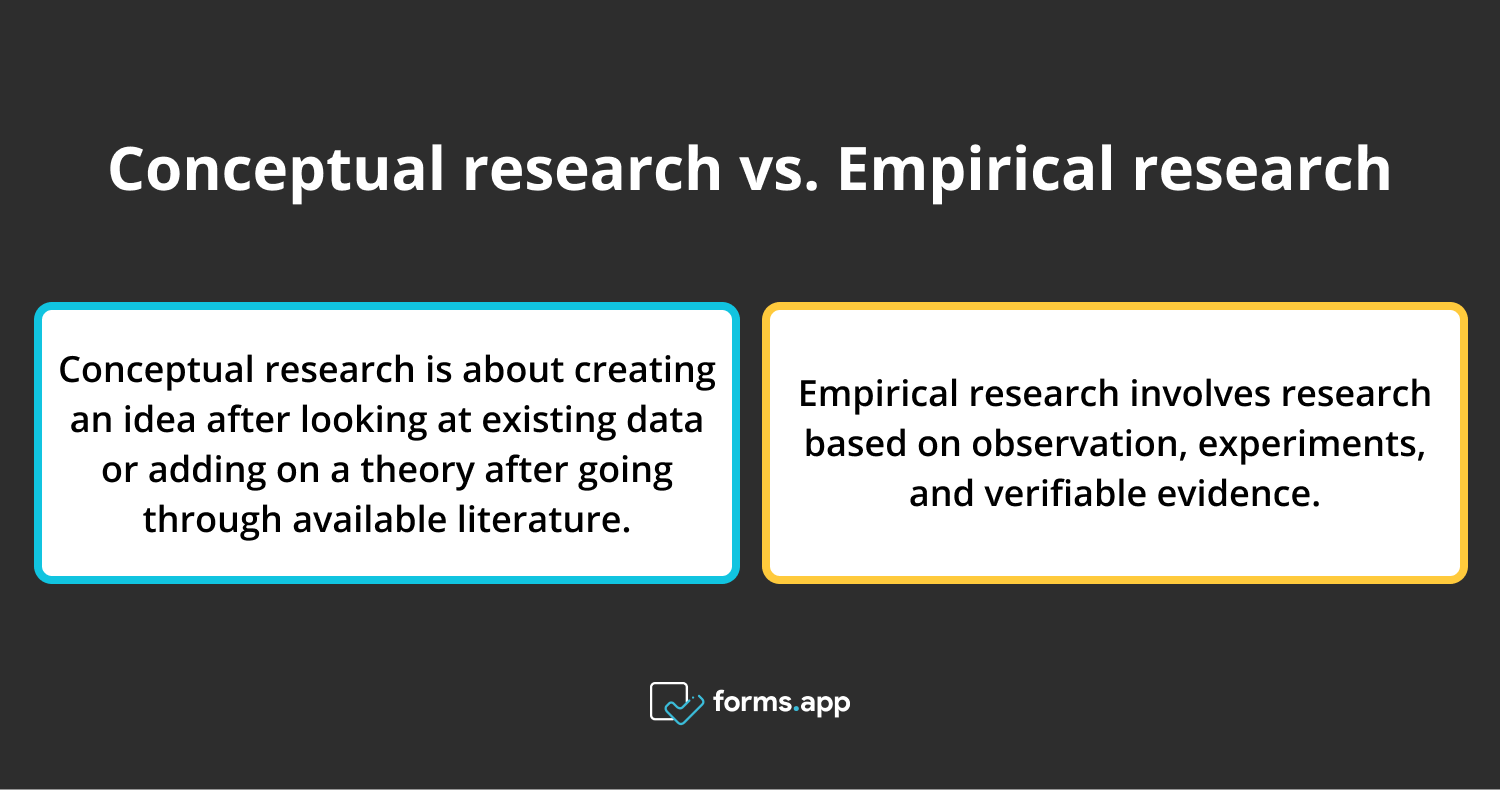
The difference between conceptual research and empirical research
Wrapping it up
Once you encounter a problem you want to solve but you are unable to do experiments, you can go with conceptual research. Instead of conducting experiments, you should find appropriate existing literature and analyze them thoroughly. Just then, you can create a conceptual framework.
And you can always use the help of a good online tool for your needs when doing research. The best tool for all your needs, from forms to surveys to questionnaires, is forms.app. forms.app is an online survey maker that offers more than 1000 ready-to-use templates and can be the help you need!
Defne is a content writer at forms.app. She is also a translator specializing in literary translation. Defne loves reading, writing, and translating professionally and as a hobby. Her expertise lies in survey research, research methodologies, content writing, and translation.

